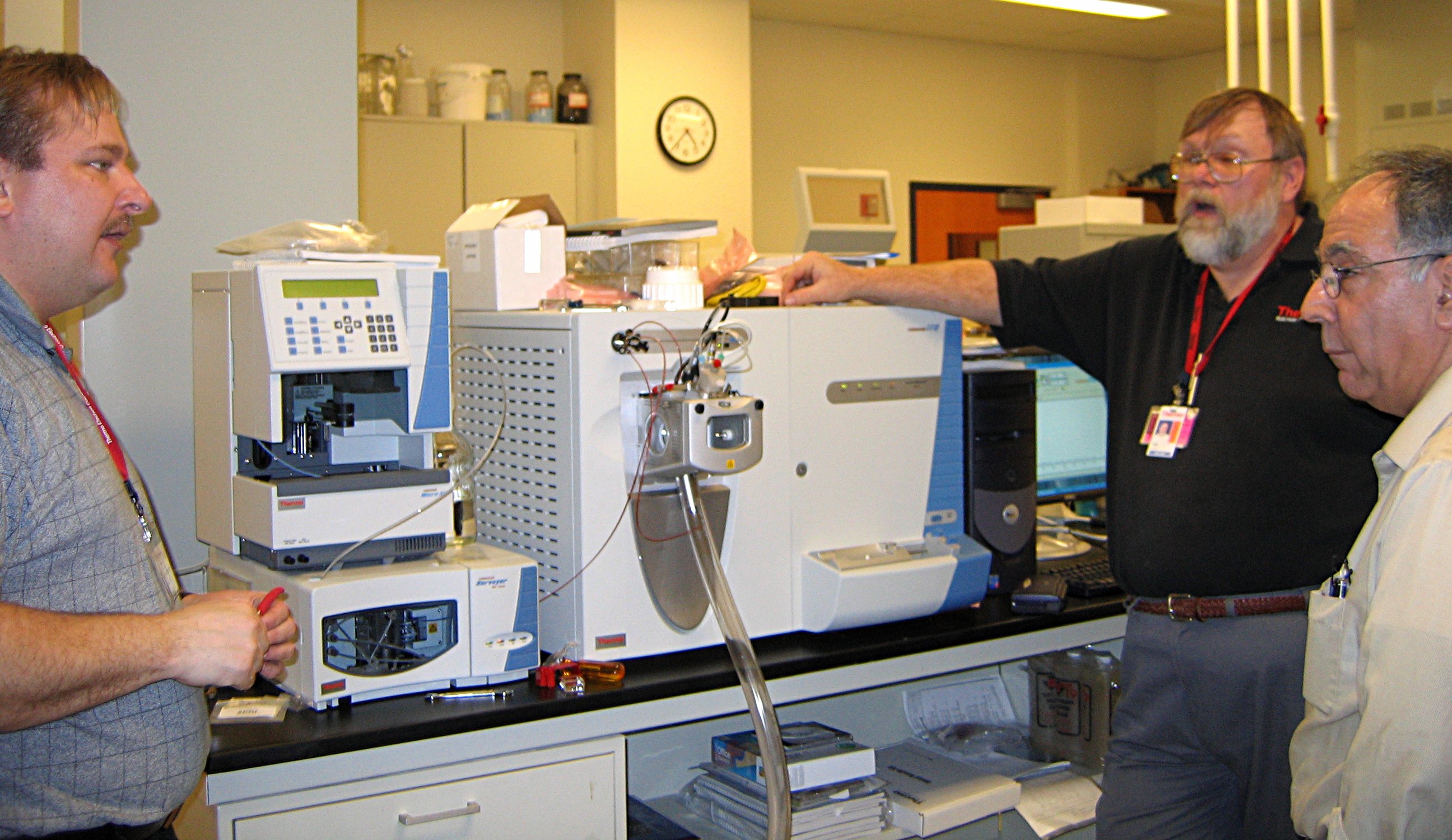Difference between revisions of "Chromatography data system"
Shawndouglas (talk | contribs) (Updated to CDS as primary.) |
Shawndouglas (talk | contribs) m (Shawndouglas moved page Chromatography data management system to Chromatography data system over redirect: CDS is more common in the industry) |
Revision as of 20:12, 18 April 2019
Sometimes referred to as a chromatography data management system (CDMS), a chromatography data system (CDS) is a set of dedicated data-collection tools that interface and/or integrate with a laboratory's chromatography equipment. A base CDS will set up a desired methodology to be used by the chromatography equipment, acquire data from it, process the acquired data, store the information in a database, and interface with other laboratory informatics systems to import and export files and data.[1]
History of the CDS
The first attempts to automate the analysis of chromatography data through electronics took place in the early 1970s. These analysis tools utilized microprocessor-based integrators, "dedicated devices for measuring chromatographic peaks and performing user-specified calculations" which also featured a printer plotter to output the results.[1] Limited memory plagued those early systems, preventing more than one chromatograph from being stored at any one time. This became less of problem for large labs with bigger budgets in the mid-1970s, as expensive centralized data systems were installed, allowing greater data storage and sharing capabilities.[1]
As computers shrank in size, the personal computer became a viable reality. In 1980, entrepreneur and Hewlett-Packard prodigy Dave Nelson saw the potential the personal computer could have on the field of analytical chemistry, joining with partner Harmon Brown to create Nelson Analytical Inc. That year they developed the first CDS personal computer software, soon followed by Turbochrom, the first CDS system for MS Windows.[2][3] This innovation quickly spread from analytical chemistry labs to the fields of environmental, forensic, and pharmaceutical sciences. At the same time chromatography minicomputers like Hewlett-Packard's 3350 LAS Lab Automation System and Perkin-Elmer's LIMS 2000 CLAS chromatography laboratory automation system were seeing increased utilization, featuring the data acquisition and processing of up to 32 or more simultaneous chromatographs.[4]
In the 1990s, more affordable higher-performance PCs — combined with tighter networking standards — allowed for networks of CDSs, especially those installed on personal computers. By the late '90s, the CDS commonly featured the ability to set up a methodology and analytical run information, control some instruments, acquire injection data, process the data in different ways, save the data, and transmit it to other systems like a LIMS.[1] At the turn of the century the CDS was becoming increasingly web-enabled[5], and by 2008, CDS functions were becoming more enhanced, driven by improvements in liquid chromatographs (LC) and gas chromatographs (GC). The new innovation of high-speed LC and GC instruments meant the potential for faster data generation, improved separation, and higher resolutions and sensitivities.[6] While these next-generation machines would bring more processing power to chromatography labs, it also meant that vendors would have to improve CDSs, specifically the analog-to-digital converter sampling rates. Some vendors were estimating at the time that data acquisition sampling rates on the order of 100 to 300 Hz would be needed to keep up with the new wave of speedier chromatography devices. Additional concerns of scalability and remote access were becoming important due to the expansion of pharmaceutical and chemical companies expanding into parts of Latin America, South America, and the Far East.[6]
Features of a CDS
A CDS may be set up for use in three primary ways[7]:
- as a standalone system that controls two or more chromatographs
- as a standalone system that controls a single chromatograph, including LC-MS or GC-MS instruments
- as a networked system that controls multiple instruments in one or more labs
In operation, a CDS provides multiple features, including (but not limited to)[7][8]:
- sample and blank processing
- integration of peaks and construction of calibration curves
- data analysis, visualization, and validation
- third-party software integration
- third-party instrument integration
- data warehousing from multiple instruments
- workflow management
- procedure and experiment development and scheduling
- out-of-specification and out-of-tolerance testings
- audit trail and compliance control
CDS vendors
See the CDS vendor page for a list of CDS vendors past and present.
References
- ↑ 1.0 1.1 1.2 1.3 McDowall, R.D. (1999). "Chromatography Data Systems I: The Fundamentals" (PDF). pp. 7. Archived from the original on 03 December 2015. https://web.archive.org/web/20151203095517/http://www.21cfrpart11.com/files/library/compliance/cds_1.pdf. Retrieved 29 September 2017.
- ↑ Chemical Heritage Foundation (January 2002). "David Nelson to receive the first annual PITTCON Heritage Award". Science Blog. http://www3.scienceblog.com/community/older/2002/G/20021575.html. Retrieved 29 September 2017.
- ↑ Felton, M.J. (2002). "CDS: Networked and Regulated" (PDF). Today's Chemist at Work 11 (9): 20. http://pubs.acs.org/subscribe/archive/tcaw/11/i09/pdf/902felton.pdf.
- ↑ Ryan, J.F. (2004). "LIMS: From Chromatograms to Computers" (PDF). Today's Chemist at Work 13 (4): 36. http://pubs.acs.org/subscribe/archive/tcaw/13/i04/pdf/404ryan.pdf.
- ↑ Rooney, T.A. (2001). "Chromatography data systems: On track at speed". Today's Chemist at Work 10 (9). http://pubs.acs.org/subscribe/archive/tcaw/10/i09/html/09rooney.html.
- ↑ 6.0 6.1 Long, E.C. (19 August 2008). "Trends in Chromatography Data System Software Development". Scientific Computing. Advantage Business Media. https://www.scientificcomputing.com/article/2007/09/trends-chromatography-data-system-software-development. Retrieved 29 September 2017.
- ↑ 7.0 7.1 McDowall, R.D.; Burgess, C. (April 2016). "The Ideal Chromatography Data System for a Regulated Laboratory" (PDF). UBM. pp. 34. http://alfresco.ubm-us.net/alfresco_images/pharma/2017/04/04/931a92d6-8cd8-4156-8399-389082051852/The%20Ideal%20Chrom%20Data%20Syst.pdf. Retrieved 29 September 2017.
- ↑ DePalma, A. (13 October 2016). "The Evolution of Chromatography Data Systems". Lab Manager. LabX Media Group. http://www.labmanager.com/product-focus/2016/10/the-evolution-of-chromatography-data-systems-. Retrieved 29 September 2017.










